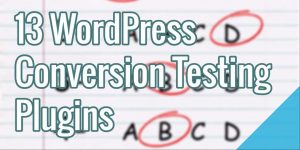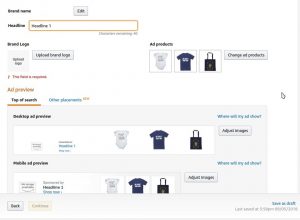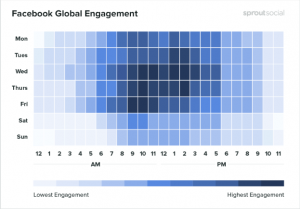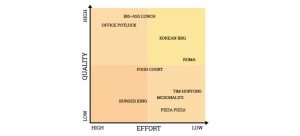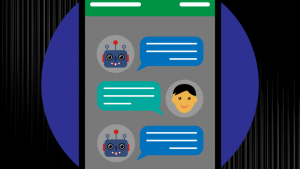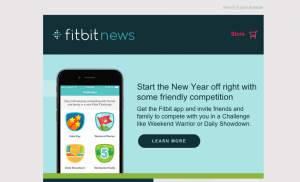
If you’re a lead generation marketer, then you know you need to improve conversion rates. It sounds straightforward enough, but a lot of marketers are struggling with the most fundamental aspects of improving conversion rates: lead generation and lead quality. How do you know what kind of leads you really need? And how do you know if your incoming leads are high-quality? After all, not all leads are created equal.
Data enrichment is an oftentimes overlooked way to increase lead conversion rates. By enhancing the lead data you already have, you gain the ability to segment the right prospects and customers, develop accurate and detailed personas and craft personalized messages. Once you know who you should be targeting, it’s a matter of using split A/B tests to perfect your messaging. This blog post will speak to how data enrichment helps identify and build better personas and create more personalized messaging for increasing conversion rates.

Marketers want to get better quality leads through the door but are often addressing so many other fires that quality can be compromised by the focus on lead generation. We’ve all been there: On any given day, you may find yourself teetering between the frenzied task of delivering leads while also making sure that those leads are of high quality. The conversation always turns towards the quickest way to gather new leads (think: email blasts and sponsored campaigns) without much attention to who’s being targeted and what’s being offered. You may reach your lead quota, but by focusing more on the quantity than quality of leads, the effort in acquiring those leads will be ill-spent.
Creating a robust customer profile
The first step in building anything effective is making sure your foundation is solid and that you have all the materials necessary to carry out the plan. For lead generation marketers, this solid foundation comes from a robust customer profile, which means understanding who your ideal customers are and what they care about. Think about it: Crafting the actual message is the easy part; the difficulty lies in sifting through the thousands or millions of people visiting your website and honing in on which of those visitors will actually make a purchase.
Let’s walk through this example: A luxury vehicle company wants to launch a promotional campaign for their ideal customer, but they can’t quite pinpoint what their ideal customer looks like. The company gets quite a bit of foot traffic in their dealership and many inquiries through their website and mobile app. They have access to basic customer information, such as name, phone number and address, but nothing to help them distinguish who will care about this promotion the most.
 They want to cast as small a net as possible for this campaign so that they don’t waste marketing spend and time associated with creating all the collateral. Information they’re looking for includes income bracket, lifestyle, and age range—data to help define who the ideal customer actually is. After all, you can’t target the unknown. So what does the company do to get this data? Add more form fields to the website? Email the folks who already expressed interest and ask for more information? Nope! They can simply use a data enrichment service to fill in the gaps.
They want to cast as small a net as possible for this campaign so that they don’t waste marketing spend and time associated with creating all the collateral. Information they’re looking for includes income bracket, lifestyle, and age range—data to help define who the ideal customer actually is. After all, you can’t target the unknown. So what does the company do to get this data? Add more form fields to the website? Email the folks who already expressed interest and ask for more information? Nope! They can simply use a data enrichment service to fill in the gaps.
Information that they can get from data enrichment services includes:
Demographic data
- Gender
- Income
- Age
- Occupation
- Religion
- Nationality
Geographic data
- Place of work
- City
- Region
- Country
- Population density
- Climate
Psychographic data
- Lifestyle
- Attitudes
- Beliefs
- Values
- Personality types
- Buying motives
- Product usage
Using data enrichment services will ultimately help this luxury vehicle maker differentiate between the window shoppers and actual purchasers. How’s that, you may ask? For the simple reason that data enrichment services can be customizable to integrate into an existing data environment, businesses can have the enriched results fed directly back into their CRM systems or work in real time on their websites. The ability to append additional information to current customer data helps marketers create infinitely more personalized and value-added messaging. Cutting through all the marketing noise, bringing value to each customer by really knowing what they care about—that’s only possible by developing a thorough customer profile.
Testing, testing, 1, 2, 3
Marketing is a dynamic field that requires consistent testing and improvement. You can’t just get away with one message, one design or one key phrase and expect it to be perfect—consumer taste varies greatly and there’s often disconnect between what businesses deliver and what consumers expect. That being said, one of the most important initiatives for marketers to undergo is performance evaluation and testing through split A/B testing.
Let’s take that luxury vehicle business again. They’ve figured out that their ideal customer is a late-forty-something business tycoon, married and living in suburbia. But before rolling out their promotional campaign on a wide scale, they send a small email campaign to a portion of that segment to test receptiveness. The company finds out, to their dismay, that engagement rates are much lower than expected.
In situations like this, it’s important to dissect the campaign into its constituents and begin testing different aspects. Factors such as word choice and design elements are important things to consider. Creating an original version (version A) and a variable version (version B) allows marketers to compare what works and what can be improved upon. This method, called AB testing, is a means of measuring the impact marketing efforts have on conversion rate and continuously improving on them.
So marketers at the luxury vehicle company decide to keep everything in the email consistent except for their call to action (CTA) button at the end. They change the wording of the CTA, and keep the original copy to compare against. The business discovers that the new variation drives higher conversion rates, and they decide to implement the change for their overall promotional campaign.
Split testing is made all the more effective when augmented by a thorough understanding of who you’re marketing to. Having a robust customer profile at hand removes a lot of the guesswork in targeting. Once you know whom you’re trying to reach, it’s easier to decide what to say. Then, it’s a matter of perfecting the message and experience through A/B tests. Deep consumer insight combined with targeted testing empowers marketers to make data-backed improvements to their marketing initiatives.
Digital & Social Articles on Business 2 Community(162)
Report Post
